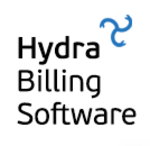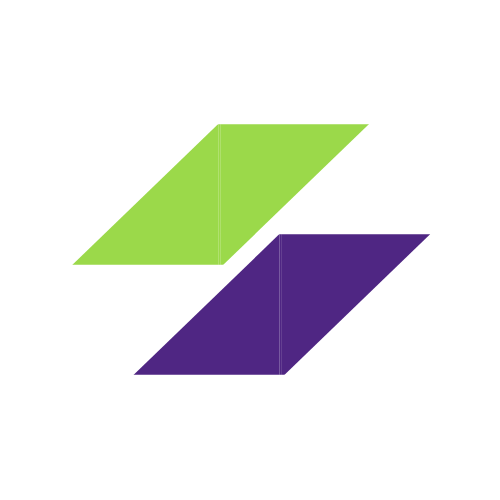Description

Hydra Billing

BillClap
Comprehensive Overview: Hydra Billing vs BillClap
To provide a detailed overview of Hydra Billing and BillClap, we'll start by addressing each of the outlined points individually:
a) Primary Functions and Target Markets
Hydra Billing:
-
Primary Functions:
- Hydra Billing is primarily designed to handle complex billing processes, particularly for telecommunications and utility companies. It offers features such as real-time rating, charging, invoicing, and account management.
- The software supports multi-currency and multi-language operations, making it suitable for global enterprises.
- It also offers integration capabilities with existing CRM and ERP systems, allowing for seamless operation with other business tools.
-
Target Markets:
- The primary target market for Hydra Billing includes telecommunications companies, ISPs (Internet Service Providers), and utilities providers.
- Hydra is often used in industries that demand precise billing processes due to large volumes of transactions and varied pricing models.
BillClap:
-
Primary Functions:
- BillClap is commonly used for simpler billing and invoicing solutions, targeting small to medium-sized businesses (SMBs).
- Its features include invoice generation, payment tracking, customer management, and reporting.
- BillClap emphasizes ease of use, scalability, and customer-centric features like automated reminders and customized invoices.
-
Target Markets:
- BillClap primarily serves small businesses, freelancers, and startups looking for an affordable and straightforward billing solution.
- Its market tends to include businesses that do not require the complex billing solutions that large enterprises might need.
b) Market Share and User Base Comparison
-
Hydra Billing:
- Hydra Billing is a niche product with a specific focus on telecommunications and utilities. As such, its market share is generally defined by its penetration in these specific industries rather than broad appeal.
- The user base is typically comprised of larger companies with extensive billing needs, which could mean fewer but larger clients compared to more generalized billing software.
-
BillClap:
- BillClap competes in a more generalized billing software market with numerous small and medium-sized billing platforms.
- Its market share is reflective of its focus on SMBs, with potentially a larger number of customers but smaller individual account sizes compared to Hydra Billing.
- The user base is broader and more fragmented, reflecting a wide array of industries and business types.
c) Key Differentiating Factors
-
Complexity and Scalability:
- Hydra Billing is differentiated by its capability to handle complex and large-volume billing tasks, making it suitable for large enterprises with specialized needs.
- BillClap, on the other hand, differentiates itself through simplicity and ease of use, catering to businesses with more straightforward billing requirements.
-
Industry Focus:
- Hydra Billing's focus on telecom and utilities is a significant differentiator, as its features are tailored to meet the needs of these sectors.
- BillClap targets a wider range of small businesses across various industries with a one-size-fits-all approach.
-
Integration and Customization:
- Hydra Billing offers extensive integration capabilities with other enterprise systems and can be customized to a greater extent to fit industry-specific needs.
- BillClap offers basic integrations focused on popular small-business platforms, prioritizing ease of setup over extensive customization.
In summary, Hydra Billing and BillClap serve different segments of the billing software market, with each product offering distinct features tailored to their respective target audiences. While Hydra Billing excels in complexity and industry specialization, BillClap provides an accessible and cost-effective solution for smaller enterprises.
Contact Info

Year founded :
Not Available
Not Available
Not Available
Bulgaria
http://www.linkedin.com/company/hydra-billing-solutions

Year founded :
2020
+91 89290 03309
Not Available
India
http://www.linkedin.com/company/billclap
Feature Similarity Breakdown: Hydra Billing, BillClap
To provide a feature similarity breakdown for Hydra Billing and BillClap, we can consider the general structure and offerings typical of billing and invoicing software, since specific details about these particular products might not be readily available. Here's how their features might typically compare:
a) Core Features in Common:
-
Invoicing: Both platforms likely offer capabilities for creating, sending, and managing invoices with professional templates.
-
Payment Processing: The ability to accept and track payments, potentially integrating with various payment gateways.
-
Recurring Billing: Support for subscription-based models, allowing for automated billing cycles.
-
Customer Management: Tools for managing customer information, history, and communications.
-
Reporting and Analytics: Basic financial reporting, tracking sales and revenue, and providing insights into business performance.
-
Tax Management: Automation and calculation of taxes based on location and regulations.
-
Multi-currency Support: Handling transactions in different currencies for global operations.
-
Notifications and Alerts: Automated reminders for upcoming payments or overdue invoices.
b) User Interface Comparison:
-
Design: User interfaces in billing software like Hydra Billing and BillClap typically aim for simplicity and clarity, though specific design aspects can vary. Both might feature dashboards with quick access to key functions but might differ in visual aesthetics and navigation flow.
-
Usability: Usability is crucial for these tools, and while both are likely designed to be user-friendly, specific layout choices or customization options might make one easier to use over the other.
-
Customization: BillClap might offer a different degree of customization options (e.g., personalized dashboards or layout configurations) compared to Hydra Billing.
-
Mobile Accessibility: Both could provide mobile-friendly interfaces or dedicated apps, but one might have more comprehensive features in their mobile version.
c) Unique Features:
-
Hydra Billing:
- Telecom Integration: If specialized for telecom, Hydra Billing might offer integrations that streamline processes specific to telecom billing, such as usage tracking and telecom-specific tax handling.
- Advanced Security: Features like enhanced encryption and multi-factor authentication geared towards industries handling sensitive data.
-
BillClap:
- SME Focus: BillClap might focus more on small to medium enterprises, offering simpler onboarding processes or features like vendor management at a lower price point.
- Local Integrations: It might cater to regional businesses with integrated local payment gateways or compliance tools specific to certain countries.
Conclusion:
Both Hydra Billing and BillClap likely share core billing features but differ in their target clientele, with specific functionalities designed to cater to these audiences. The user interfaces vary depending on how the products position themselves in ease of use and visual design. Unique features would primarily revolve around their specialization and market focus, whether towards specific industries or business sizes.
Features

Not Available

Not Available
Best Fit Use Cases: Hydra Billing, BillClap
Hydra Billing
a) Best Fit Use Cases for Hydra Billing
- Telecommunications Companies: Hydra Billing is particularly suited for telecom companies that require robust, scalable billing solutions capable of handling large volumes of data and complex billing scenarios.
- Utilities and Energy Providers: It is also ideal for utilities and energy providers that need to manage a variety of subscription and pay-per-use models.
- Internet Service Providers (ISPs): With the need for dynamic pricing models and real-time billing, ISPs can leverage Hydra Billing for managing bandwidth and data usage efficiently.
- SaaS Companies: Complex subscription models and tiered services in SaaS need the flexibility and detailed analytics offered by Hydra.
- Enterprises with Multiple Subsidiaries: Large corporations with diverse services can benefit from Hydra's capability to integrate and centralize the billing processes across various divisions.
BillClap
b) Preferred Scenarios for BillClap
- Small to Medium-sized Enterprises (SMEs): BillClap is particularly suitable for SMEs that require straightforward, user-friendly billing management without the complexities of larger systems.
- Freelancers and Small Service Providers: For individuals and small businesses that need simple invoicing, client management, and payment tracking, BillClap offers an efficient solution.
- Retail and E-commerce: Companies looking for straightforward billing solutions to manage online sales and customer transactions can benefit from BillClap's capabilities.
- Local and Regional Businesses: Businesses with a predominantly local customer base will find BillClap's simple and cost-effective features appealing.
Industry Vertical and Company Size Catered by Hydra Billing and BillClap
Hydra Billing
- Industry Verticals: Telecommunications, Energy, Utilities, SaaS, Large Enterprises.
- Company Size: Large enterprises and medium-sized companies that handle extensive data and require complex billing solutions and integrations.
BillClap
- Industry Verticals: Retail, E-commerce, Freelancers, and various service-based industries.
- Company Size: Small to medium-sized businesses, freelancers, and individual business owners who need a cost-effective, easy-to-navigate billing system.
Both Hydra Billing and BillClap serve specific market segments with distinctive needs. Hydra Billing is designed to tackle complex billing challenges faced by large and medium enterprises across data-intensive industries, while BillClap focuses on delivering simplicity and efficiency for smaller businesses, ensuring ease of use and affordability remain at the forefront.
Pricing

Pricing Not Available

Pricing Not Available
Metrics History
Metrics History
Comparing teamSize across companies
Conclusion & Final Verdict: Hydra Billing vs BillClap
To provide a comprehensive conclusion and final verdict for Hydra Billing and BillClap, we will examine their features, pricing, user experiences, and specific use cases to determine which product offers the best overall value.
a) Best Overall Value:
The best overall value between Hydra Billing and BillClap depends significantly on the specific needs and priorities of the user. However, considering factors such as feature sets, cost-effectiveness, usability, and customer support:
- Hydra Billing often offers extensive features tailored for businesses that require advanced billing and invoicing capabilities, including telecom and subscription services.
- BillClap tends to appeal more to small to medium-sized enterprises (SMEs) owing to its user-friendly interface and flexible pricing plans.
Ultimately, if your business requires comprehensive billing functions and you operate within a more complex billing environment, Hydra Billing may offer the best value. For smaller enterprises desiring simplicity and efficiency at a moderate cost, BillClap might be the better choice.
b) Pros and Cons:
Hydra Billing:
-
Pros:
- Rich feature set suitable for complex billing environments.
- Customizable solutions for telecom and service-based industries.
- Strong support for high-volume billing processes.
-
Cons:
- May have a steeper learning curve due to its complexity.
- Higher price point could be prohibitive for smaller businesses.
- Potential overkill for businesses with minimal billing needs.
BillClap:
-
Pros:
- User-friendly interface with easy navigation.
- Flexible and affordable pricing models suitable for SMEs.
- Great for startups and businesses with straightforward billing requirements.
-
Cons:
- Limited advanced features for complex billing scenarios.
- May not scale well for industries with very specific or high-volume needs.
- Some users may find the customization options lacking compared to more robust systems.
c) Specific Recommendations:
-
Assess Your Needs: Businesses should first assess their billing needs. Complex, high-volume operations might benefit more from Hydra Billing, while simpler, cost-effective solutions may warrant BillClap.
-
Budget Consideration: Evaluate your budget constraints. If cost is a significant factor and you're operating a smaller business, BillClap provides efficient value without extensive financial commitment.
-
Scalability: Consider future growth. If your business plans to scale rapidly or enter markets requiring more features, Hydra Billing might be the safer long-term investment.
-
Trial and Demos: Utilize free trials or demos offered by both software solutions to get a hands-on understanding of their interface and capabilities.
In conclusion, the decision between Hydra Billing and BillClap largely hinges on the complexity and scalability of your billing needs, as well as budget considerations. Both systems offer significant strengths, but through careful assessment aligned with your business objectives, you can select the solution that offers the most value for your specific circumstances.
Add to compare
Add similar companies




